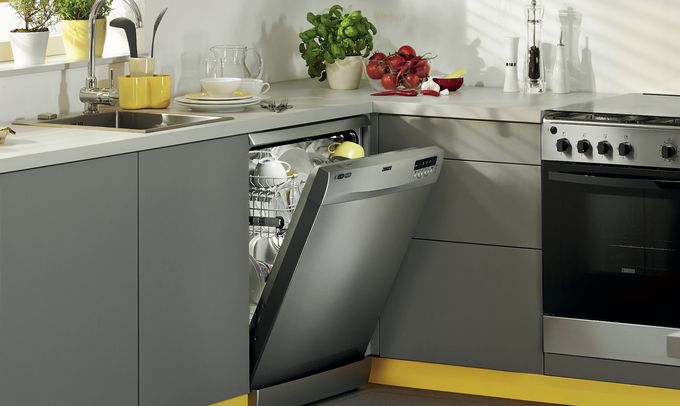The technological revolution of the late 20th century literally blew up the segment of household appliances. In a relatively short time, companies have filled the market with a huge amount of various devices. As a result, modern people’s apartments are filled with PCs, TVs, dozens of kitchen appliances, vacuum cleaners, air conditioners, washing machines, coffee machines, etc. In addition, almost all household appliances belongs to a segment of technically complex devices, often using SMART technologies. In fact, the Smart Home concept today is partially implemented in the LG series on ThinQ Smart Platform or in the Samsung series with support of SmartThings app.
This trend greatly simplifies our lives, minimizing household chores and providing fundamentally new opportunities. Of course, dishwashers occupy a worthy place in the list of the most popular household appliances.
Unfortunately, this situation also has a downside. Even relatively expensive models of famous brands with an excellent reputation periodically break. As a result, the owner of several dozens of complex household devices about once a month is faced with the unpleasant situation of their failure. Of course, the warranty greatly simplifies this problem. But even it does not relieve a person from the hassle, and, sometimes, from costs.
Self repair at least simple failures can solve this problem. But it requires some assembly skills. In addition, the success of any repair directly depends on the correct identification of failure. Of course, companies are trying to simplify this task, equipping many of their models with the option of self-diagnosis, error code display, etc. Unfortunately, they often have ambiguous interpretation, which reduces their effectiveness.
Classification
Virtually any household appliances have an uneven distribution of failure rates of various types, and dishwasher is no exception. The list of its main failures includes the absence or limitation of modes for drying dishes or heating water.
As a rule, slow drying of dishes in models with a condensation system does not indicate a malfunction, but is due to the peculiarity of this technology. Evaporated water settles on the metal walls of the chamber, the cooling rate of which coincides with the cooling duration of the internal coating. As a result, a rather slow decrease in air humidity in the working chamber with dishes increases its drying time. Of course, in this case, the device does not require repair.
But a simultaneous decrease in the washing quality and an increase in the drying duration may indicate a breakdown.
Their list includes:
1. Malfunction of the heating element.
This element provides water heating to the required temperature.
2. Thermal sensor malfunction.
This sensor provides the necessary information for the formation signal of the drying mode activation. Accordingly, its failure blocks the start of the drying process. Sometimes, this situation occurs during process of washing dishes.
3. Relay fault on control board.
In this case, the relay does not provide the required voltage to turn on the heating element.
Models with a turbo dryer may additionally break due to clogged ducts or fan failure. This system distributes hot air throughout the entire volume of the working chamber. Accordingly, its failure reduces the drying efficiency, reducing it to the level of a condensation model.
Recommendations
As a rule, faulty heating elements and thermal sensors require replacement, which many people can carry out on their own, without the assistance of a qualified technician.
Usually, dishwashers use tubular immersion heaters that provide heating for running water to +100 ° C. Of course, their shape corresponds to the design of a particular model. For example, Whirlpool dishwashers have semi-circular electric heaters.
Many Bosch models use complex-shaped heaters.
Some expensive models can use more modern electric heaters with a special bulb made of durable composite steatite.
They have a significantly longer service life due to the lack of direct contact with water.
In addition, some companies use an integrated design. For example, Bosch uses in its models since the 3rd generation an improved pump with a built-in non-removable electric heater.
Unfortunately, the failure of such an electric heater requires the replacement of the entire node.
Usually, the heating element is located at the bottom near the bottom. But many dishwashers form an error code of this fault on the screen. For example, Bosch models display an electrical heater problem by code e09, e9 or 09.
Of course, testing the electric heater is also easily checked with a multimeter. The video at the end demonstrates this simple process. Of course, in the event of a spiral break, the heating element requires replacement. Today, the Internet offers a wide range of videos with a step-by-step demonstration of this process for different brands.
Other
Thermal sensor is usually located next to the water flow sensor.
But you are unlikely to confuse them because of the different designs. The water flow sensor has water inlet / outlet.
Replacing the temperature sensor also does not require qualifications.
Testing and replacing the relay on the control board requires wiring skills.
The absence of characteristic fan noise indicates a failure of the ventilation system. Its diagnosis and repair usually requires the intervention of a specialist.
